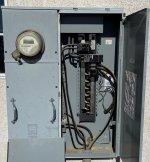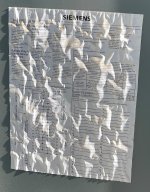Simply stating "before" its point of supply would be a lot less ambiguous, but ambiguous is what the NEC does best. Thanks for clearing it up all the same, it makes more sense now. I assume also in GoldDigger's example with the MLO panel, which would supply NO OC protection at all to any feeders tapped off it's bus, then NO OCPD certainly "exceeds" the value permitted for similar conductors in 240.4. Although I guess if you continue upstream beyond the MLO panel you will eventually hit an OCPD that would most likely exceed the ampacity of the feeders, giving them the definition of a tapped conductor.
Your wording of this makes it confusing to interpret.
The Breakers (Or overcurrent protection devices) stabbed on to a MLO panel's buss bars creates the protection for a feeder or branch circuit.
Not all MLO panels have upstream protection.
The old 6 movement rule allowed 6 movement of the hands to kill a service, or, shutting off 6 breaker throws.
Yes the breakers in the MLO panels protect overloading the panel if sized correctly, but, if you put feed through lugs on the bussbars of a 6 movemne rule setup like this you are actually tapping service conductors not feeder conductors seeing as how the bussbars are not protected by an OCPD other than the fuse at the utility transformer.
Now, if the MLO panel does have an upstream overcurrent protection device such as an enclosed circuit breaker or fused disconnect ahead of it, and, you install lugs on the buss bars of that panel, then yes, you are then tapping the buss or feeder to the MLO panel.
But,
If your tap conductors are sized large enough for the OCPD serving the panel then you have not created a tap per se,, you have simply extended the feeder. If I connect a conductor of a lesser amperage to one of a larger amperage then I've made a tap and the tap rules start to apply to protect those smaller conductors from the larger amperage.
For something to be called a feeder it must have protection ahead of it to begin with.
JAP>




